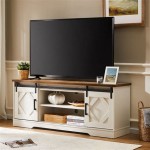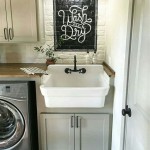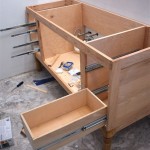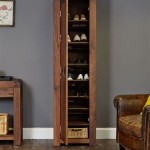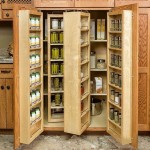Wine Storage Cabinets: The Importance of Temperature Control
The preservation of wine is an intricate science that relies heavily on maintaining optimal environmental conditions. Among these conditions, temperature control stands out as a paramount factor in ensuring the long-term quality and maturation of wine. Wine storage cabinets, particularly those with temperature control capabilities, offer a sophisticated solution for both casual enthusiasts and seasoned collectors looking to safeguard their investments and enjoyment.
The impact of temperature on wine is multifaceted. Fluctuations and extremes can lead to irreversible damage, altering the aroma, flavor, and overall structure of the wine. Understanding the principles of temperature control within wine storage cabinets is essential for anyone serious about preserving and aging wine properly.
The inherent complexity of wine necessitates precise environmental controls; storage cabinets are designed to offer just that. These specialized units provide a stable and regulated environment, protecting the wine from external factors that could compromise its integrity. This article will delve into the specific reasons why temperature control is crucial, the technologies employed in temperature-controlled wine cabinets, and the various considerations for selecting the appropriate unit.
The Detrimental Effects of Inconsistent Temperatures
Wine is a delicate substance, and its chemical makeup is highly susceptible to temperature variations. When wine is exposed to temperatures above or below the ideal range (typically between 50-65°F or 10-18°C), a cascade of negative effects can occur.
Exposure to high temperatures accelerates the aging process. This can lead to premature oxidation, which results in a dulling of color, a loss of fresh fruit flavors, and the development of undesirable cooked or stewed notes. Essentially, the wine ages too quickly, losing its complexity and nuance before its prime. In extreme cases, the wine can become "cooked" or "baked," rendering it undrinkable.
Conversely, excessively low temperatures can also be problematic. While not as immediately damaging as high temperatures, prolonged exposure to cold temperatures can cause the wine to freeze. Freezing expands the liquid, potentially pushing the cork out of the bottle or even cracking the glass. Even if the bottle remains intact, the freezing process can alter the wine's chemical structure, leading to cloudiness, precipitation of tartrates (harmless crystals), and a reduction in flavor intensity.
Fluctuating temperatures are perhaps the most damaging of all. Repeated expansion and contraction of the wine due to temperature swings can compromise the integrity of the cork seal. This allows oxygen to enter the bottle, accelerating oxidation and spoilage. Furthermore, temperature fluctuations can disrupt the subtle chemical reactions that occur during the aging process, leading to an imbalance in the wine's flavors and aromas. The result is a wine that fails to reach its full potential and may even deteriorate prematurely.
A temperature-controlled wine cabinet mitigates these risks by maintaining a consistent and appropriate temperature, regardless of external environmental conditions. This stability allows the wine to age gracefully, developing its complex flavors and aromas over time.
Technologies Employed in Temperature-Controlled Wine Cabinets
Several technologies are utilized in temperature-controlled wine cabinets to ensure precise and consistent environmental conditions. The most common methods involve refrigeration systems, insulation, and humidity control elements.
Refrigeration systems are the core components responsible for maintaining the desired temperature within the cabinet. These systems typically employ either compressor-based or thermoelectric cooling technology. Compressor-based systems are similar to those found in standard refrigerators and are generally more powerful and efficient, particularly for larger cabinets or those located in warmer environments. They use a refrigerant to absorb heat from inside the cabinet and release it outside.
Thermoelectric cooling, also known as Peltier cooling, utilizes a solid-state device that transfers heat from one side to the other when an electric current is applied. Thermoelectric systems are generally quieter and more energy-efficient than compressor-based systems, making them suitable for smaller cabinets or those located in living areas. However, they are less powerful and may struggle to maintain consistent temperatures in warmer environments.
Insulation plays a crucial role in maintaining temperature stability. High-quality insulation materials, such as polyurethane foam or fiberglass, are used to minimize heat transfer between the inside and outside of the cabinet. This reduces the workload on the refrigeration system and helps to maintain a consistent temperature, even when the external environment is subject to fluctuations.
Humidity control is another important aspect of wine storage. Ideally, the humidity level should be maintained between 50% and 70%. Too little humidity can cause the cork to dry out and shrink, allowing oxygen to enter the bottle. Too much humidity can promote mold growth and damage labels. Some wine cabinets include built-in humidity control systems, such as water reservoirs or humidifying elements, to maintain the optimal level.
Beyond these core technologies, many wine cabinets also incorporate features such as digital temperature displays, adjustable shelving, UV-protected glass doors, and vibration dampening systems. These features further enhance the performance and user-friendliness of the cabinets, ensuring that the wine is stored in the best possible conditions.
Considerations for Selecting a Temperature-Controlled Wine Cabinet
Choosing the right temperature-controlled wine cabinet requires careful consideration of several factors, including capacity, cooling technology, temperature range, humidity control, and aesthetic design.
Capacity is a primary consideration. Assess the size of the wine collection and anticipate future growth. Wine cabinets are available in a wide range of sizes, from small countertop units that hold a few bottles to large freestanding models that can accommodate hundreds of bottles. Overestimating the required capacity is generally preferable to underestimating it.
The choice between compressor-based and thermoelectric cooling depends on the size of the cabinet, the ambient temperature of the environment, and the desired level of temperature precision. Compressor-based systems are generally recommended for larger cabinets or those located in warmer environments, while thermoelectric systems are suitable for smaller cabinets or those located in cooler environments.
The temperature range of the cabinet should be appropriate for the types of wine being stored. Most wine cabinets offer a temperature range that can accommodate both red and white wines. However, some cabinets offer dual-zone temperature control, allowing for different temperature settings for different types of wine.
Consider the features related to humidity control. Ensure the cabinet either maintains an adequate humidity level naturally through its design or incorporates a system for adding or removing moisture as needed. Proper humidity is critical for preventing cork desiccation and maintaining label integrity.
Aesthetic design should also be factored into the decision. Wine cabinets are available in a variety of styles and finishes to complement different décor styles. Consider the location of the cabinet and choose a model that blends seamlessly with the surrounding environment. Features like tinted glass, interior lighting, and adjustable shelving can enhance the visual appeal of the cabinet and showcase the wine collection.
Finally, it is important to research and select a reputable brand that offers a warranty and reliable customer support. A quality wine cabinet is an investment, and it is important to ensure that it will perform reliably for years to come. Reading reviews and comparing models from different manufacturers can help to make an informed decision.

Wine Storage Cabinets

Wine Storage Cooling Cellar Racks Units Cabinets Coolers

Luxury Temperature Controlled Wine Storage Vinomagna

Shop Wine Cabinets Le Cache

Temperature Controlled Wine Storage Solutions Cellars Cabinets

Temperature Controlled Wine Storage Design Ideas

Glass Wine Cellar With Vintageview Bordex Racking

Temperature Controlled Wine Storage Solutions

Temperature Controlled Wine Storage Solutions

Chamber Furniture Manufacturers Of Bespoke Wine Rooms Bar



